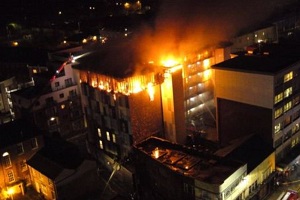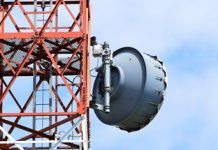The Fire Protection Association (FPA), which was established by the Association of British Insurers to research and advise on fire safety issues in the UK, said that the incident “provides a stark reminder that the problem facing UK fire safety is the result of many issues and not just Grenfell-style aluminium composite material cladding”.
Images posted on social media appear to show flames ripping through The Cube’s external cladding, which planning documents indicate is made of high-pressure laminate (HPL).
The government ban on the use of combustible materials in the external walls of new high-rise residential buildings – introduced as a response to the Grenfell Tower fire – includes HPL.
And the Ministry of Housing, Communities and Local Government has said that HPL should be removed from existing high rises unless combined with non-combustible insulation.
However, as The Cube is shorter than 18m, current government guidance allows it to remain covered in flammable cladding, despite having six storeys. The FPA said that as two people were injured in the fire, it “must be classed as a near-miss event”.
It added that the building’s HPL “clearly played a huge part in the fire’s progress” and that thorough investigations into HPL “have been hampered by it not being the focus of a major incident – until now”. “Clearly, we should not limit regulations to the mere height of a building,” the FPA argued. It called for the combustibles ban to be based on risk rather than simply height. The FPA carried out an HPL safety test on behalf of the government but later criticised the method used.








